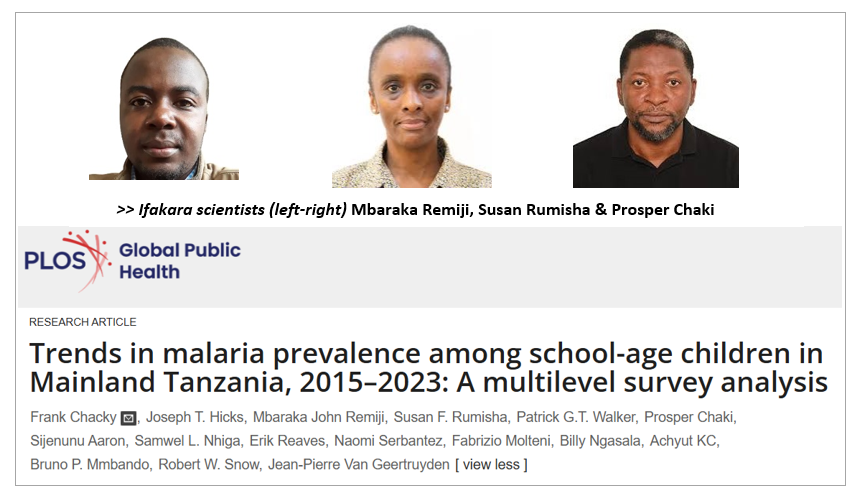
SURVEY: Malaria drops among schoolchildren in Tanzania, but progress slows

A recent national survey shows that malaria among school-aged children in Tanzania Mainland has gone down over the years, but progress may be slowing. Published on PLOS Global Public Health, the study reports that malaria prevalence dropped by nearly half between 2015 and 2021. However, this encouraging trend appears to be slowing, with little change recorded between 2021 and 2023.
Key findings
According to the study, malaria cases among school-aged children dropped from 21.6% in 2015 to 11.8% in 2021. But between 2021 and 2023, researchers observed no major improvement, raising concerns that the fight against malaria might be losing momentum.
“The observed declining malaria prevalence among school children provides valuable insight into the efforts undertaken to control malaria in mainland Tanzania,” the researchers stated. “It underscores the need for comprehensive malaria control packages, continued surveillance, and tailored interventions to maximize impact and push toward malaria elimination.”
Who conducted the study?
The survey was led by the Tanzania Ministry of Health, through its National Malaria Control Program, and was conducted in collaboration with several leading research and academic institutions. These include the National Institute for Medical Research, Ifakara Health Institute, Muhimbili University of Health and Allied Sciences, University of Dar es Salaam, Sokoine University of Agriculture, and the Tanzania Food and Nutrition Center.
Researchers analyzed data from over 307,000 children aged 5 to 16 years, sampled from 850 public primary schools across 26 regions. The children were tested for malaria using rapid diagnostic tests. In addition to testing for infection, the researchers also examined whether the children had access to key malaria prevention tools, such as insecticide-treated mosquito nets (ITNs).
Differences in cases by region, age
The data revealed differences in malaria risk based on location and demographics. Children living in Tanzania’s Lake and western zones were found to be at the highest risk of infection, while those in central regions had the lowest prevalence rates. Age also played a role—older children, especially those between 9 and 16 years old, were more likely to contract malaria compared to their younger peers. Moreover, boys were more likely to be affected compared to girls, possibly due to different behaviors or exposure to mosquitoes.
The good news? Children who consistently slept under treated mosquito nets had a lower risk of getting malaria, showing that ITNs remain one of the best ways to protect children from the disease.
“Our study shows a significant decline in malaria prevalence among Tanzanian school children from 2015 to 2023,” the authors noted, “highlighting the impact of robust malaria control initiatives like widespread ITN use and targeted interventions based on transmission risk.”
What this means
While Tanzania has made notable progress in reducing malaria among children, the stagnation observed between 2021 and 2023 indicates a pressing need to evaluate and enhance current strategies. The study emphasizes the importance of continuous surveillance and adaptable malaria control strategies that consider local ecological, behavioral, and socio-economic conditions.
Furthermore, the researchers advocate for targeted interventions tailored to specific age groups, sex, and geographic zones to enhance the effectiveness of malaria control efforts in Tanzania. One such recommendation is the potential rollout of intermittent preventive treatment for school-aged children (IPTsc), a proven strategy in other malaria-endemic regions.
In addition, the study highlights the need for continued monitoring of emerging challenges such as insecticide resistance, behavioral changes that reduce the effectiveness of ITNs, and outdoor mosquito biting patterns that contribute to transmission.
Ifakara scientists involved in the study
The study included contributions from Susan Rumisha and Prosper Chaki, both senior research scientists at the Ifakara Health Institute.
Read the publication here
